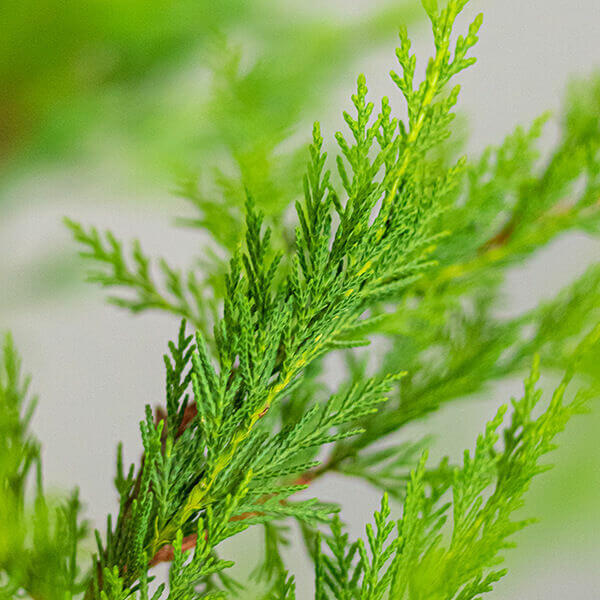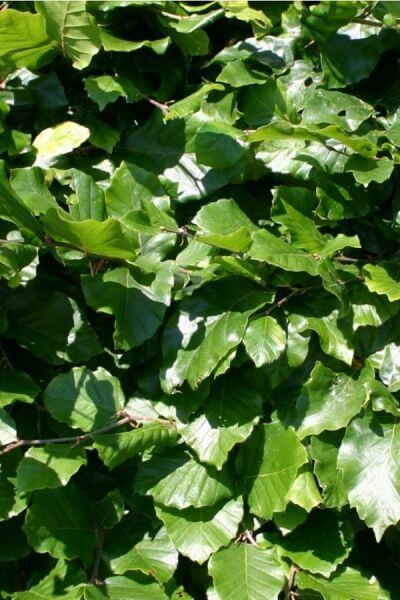Best Hedging Plants For Cottage Boundaries
Boost your garden's allure with lush hedge varieties such as Yew (Taxus), Thuja, Laurel, Photinia, and Bamboo, commemorated for their structural integrity and environmental advantages.
Yew and Thuja provide evergreen protection and winter durability, while Laurel uses fast development and broad, fragrant leaves.
Photinia adds seasonal beauty with its vibrant red foliage, and Bamboo lends a low-maintenance, peaceful atmosphere.
These hedges improve air quality, minimize sound, and create tranquil, personal areas.
Proper planting, spacing, and maintenance make sure energetic growth and environmental consistency.
Check out how these lush varieties can elevate your garden's charm and wellness.
Key Takeaways
Transform Your Garden With Lush Hedge Varieties
- Select Yew for its thick, evergreen growth and unrivaled durability.
- Go with Laurel for its quick growth and broad leaves, ensuring quick privacy.
- Select Photinia for its lively seasonal foliage, which turns a striking dark red.
- Make use of Bamboo for a low-maintenance, winter-hardy hedge with visual appeal.
- Area plants 2-3 per meter and prune frequently for optimal growth and health.
Popular Hedge Plants
When transforming a garden with lush hedge varieties, it's vital to consider popular hedge plants such as Yew, Thuja, Laurel, and Photinia due to their distinct qualities and advantages.
Yew (Taxus) is extremely respected for its durability and thick, green development, making it a prime choice for withstanding landscapes.
Thuja is noted for its evergreen foliage and robust winter resilience.
Photinia adds seasonal vibrancy with red leaves that darken in time, creating dynamic visual appeal.
Laurel provides fast growth and fragrant, broad leaves, perfect for fast personal privacy.
Furthermore, Bamboo is an exceptional choice for ambiance, using a low-maintenance, winter-hardy option that enhances the garden's visual with its classy, swaying walking canes.
These selections cater to a variety of horticultural requirements and choices.
Benefits of Garden Hedges
Garden hedges use a plethora of benefits, making them a valuable addition to any landscape. These natural barriers are affordable to implement and provide substantial wind security, enhancing air blood circulation and contributing to noise decrease. The dense foliage of hedges like Thuja and Beech ensures personal privacy by obstructing visibility, producing a peaceful and secluded environment.
Hedges also play a vital role in microclimate guideline, offering a steady environment that promotes plant development and lessens temperature changes. Their intricate leaf structures filter toxins, improving air quality and adding to a healthier garden environment.
Moreover, hedges master noise decrease, absorbing and deflecting sound waves to lower ambient sound levels. This dual performance of supplying both visual and acoustic personal privacy improves the total tranquility and visual appeal of any garden.
Planting and Upkeep Tips
For a successful hedge, meticulous preparation of the planting location is vital. Guarantee the soil has correct pH and drainage to support strong root development.
Area the plants properly for the chosen types. Water the hedge regularly during its initial growth stage, adjusting as needed with seasonal modifications.
Carry out a systematic pest control and disease avoidance method, utilizing organic or chemical treatments when needed. Regularly inspect for aphids, mites, and fungal infections.
Apply mulch to keep wetness and reduce weeds. Seasonal pruning promotes thick development and air blood circulation, essential for plant health.
Following these guidelines will help you cultivate a dynamic, properly maintained hedge that boosts the beauty of your garden.
Spacing and Trimming Guidelines
Spacing and Trimming Guidelines
Proper spacing and trimming are crucial for cultivating healthy, visually appealing hedges. Adequate spacing ensures each plant receives sufficient nutrients, light, and airflow.
Follow these guidelines for optimal hedge maintenance:
- Spacing: Position hedge plants 2-3 plants per meter to motivate robust development.
- Pruning Strategies: Routine pruning is vital for keeping preferred hedge height and shape. Cut new growth in summer and cut back older wood throughout winter season.
- Seasonal Care: Change trimming methods and schedules according to seasonal requirements to ensure plant health.
- Hedge Height: Frequently display and cut to preserve the preferred hedge height and achieve consistent looks.
Following these steps will guarantee your hedge prospers, enhancing both the appeal and functionality of your garden.
Picking the Right Hedge
Selecting the Right Hedge
Selecting the proper hedge involves evaluating aspects such as fully grown height, foliage density, and environmental durability. Effective hedge plant selection needs comprehending each species' development characteristics and site-specific flexibility.
For instance, Yew (Taxus) offers exceptional longevity and thick growth, while Thuja is notable for its winter season resilience. In addition, considering upkeep requirements is essential; fast-growing types like Laurel or Privet demand routine trimming, whereas low-maintenance alternatives like Bamboo or Ivy might be more effective for those seeking very little upkeep.
Ecological factors such as soil type, light accessibility, and wetness conditions ought to likewise guide the choice procedure. This careful technique ensures the picked hedges will thrive, offering both visual and functional benefits to the garden landscape.
Delivery and Planting Suggestions
To ensure your hedge plants prosper, they need to be delivered by specialized carriers and planted promptly upon arrival.
Follow these important actions for effective planting:
- Soil Preparation: Enrich the soil with organic matter to enhance drain and nutrient material.
- Planting Depth: Create a trench twice the width and equal to the depth of the root ball.
- Watering Strategies: Water completely after planting, keeping the soil consistently moist but not filled.
- Mulching: Use a layer of mulch to maintain wetness and reduce weeds.
Customer Support and Service
Provided the important function of prompt help in horticultural pursuits, our customer support team is available six days a week through telephone, email, and social media to offer professional guidance and quickly resolve any issues. Their devotion to quick reaction times guarantees consumer satisfaction by resolving queries related to plant health, optimal planting approaches, and upkeep schedules.

Within 24 hours
This extensive support group, enhanced by an excellent 9.3/ 10 consumer ranking, highlights our commitment to enhancing the gardening experience for every client.
Frequently Asked Questions
For How Long Does It Take for Hedge Plants to Establish?
Hedge plants typically require one to three years to become fully established, with the exact duration varying by species and growing conditions.
Effective care throughout this important duration is necessary for robust development. Constant watering, watchful weed control, and suitable fertilizer application are pivotal in promoting strong root development.
For example, fast-growing types like Laurel may develop faster, while slower-growing ranges such as Yew might take longer. Diligent upkeep speeds up the facility process, resulting in dense and healthy hedges.
What Are the Finest Hedge Plants for Personal Privacy?
The question of the very best hedge plants for privacy includes examining evergreen and deciduous choices.
Evergreen hedges like Thuja, Laurel, and Cypress offer year-round coverage, making sure constant privacy.
In contrast, deciduous hedges such as Beech provide seasonal privacy, shedding leaves in colder months.
Secret maintenance tips for personal privacy hedges consist of regular cutting, fertilizing in spring, and appropriate spacing-- typically 2 to 3 plants per meter.
In addition, consistent watering and thorough weed elimination are crucial for promoting healthy, thick growth.
Can Hedge Plants Bring In Wildlife to My Garden?
Yes, hedge plants can draw in wildlife to your garden by providing vital benefits like shelter, food, and nesting websites, consequently enhancing regional biodiversity. For example, yew, holly, and laurel are exceptional for attracting birds, while ivy supports a range of insects.
However, it is very important to note that there are some downsides, such as increased maintenance to handle bugs and regular maintenance. Carefully choosing and keeping hedge varieties can help stabilize these benefits and disadvantages, eventually fostering a lively and sustainable community in your garden.
Exist Any Flowering Hedge Plants Available?
Yes, there are flowering hedge plants available that can improve the appeal of your garden.
For example, Elaeagnus, likewise called Olive Willow, produces fragrant white flowers in the fall, adding a touch of beauty.
Photinia, another popular option, showcases vibrant red leaves that mature into a rich green, developing a vibrant visual effect throughout the seasons.
To ensure these plants prosper, it's important to practice proper pruning techniques and seasonal maintenance, such as trimming brand-new development in the summer season and cutting back in the winter.
These steps will assist keep the health and visual appeal of your blooming hedges.
How Do I Avoid Bugs in My Hedge Plants?
To avoid Additional reading bugs in hedge plants, employ natural pest control methods and maintain proper hedge care. Introduce useful bugs like ladybugs, which take advantage of damaging pests, to create a balanced ecosystem.
Regularly inspect your hedges for signs of infestation and promptly remove any afflicted parts to avoid the spread. Guarantee the health of your hedges by applying balanced fertilizers and providing adequate water.
Make use of mulching to maintain soil wetness and appropriate spacing to decrease plant stress and promote robust development. These practices jointly assist in lessening pest issues and keeping a healthy hedge.
Conclusion
In essence, picking the best hedge varieties such as Yew, Thuja, and Laurel can change any garden into a relaxing haven. These plants provide year-round plant, improve aesthetic appeal, and deal practical benefits like sound reduction and wind defense.
Appropriate planting techniques, precise spacing, consistent watering, and seasonal trimming are crucial for ideal development.
Trusted shipment services and expert consumer support ensure a smooth experience from purchase to planting, making it simpler than ever to raise your outdoor area.
Garden hedges offer a plethora of benefits, making them an important addition to any landscape. These natural barriers are economical to implement and offer significant wind security, enhancing air flow and contributing to noise reduction. The thick foliage of hedges like Thuja and Beech ensures personal privacy by obstructing exposure, developing a secluded and peaceful environment.

Pruning Methods: Regular pruning is necessary for preserving preferred hedge height and shape. Trim brand-new growth in summer and cut back older wood throughout winter.